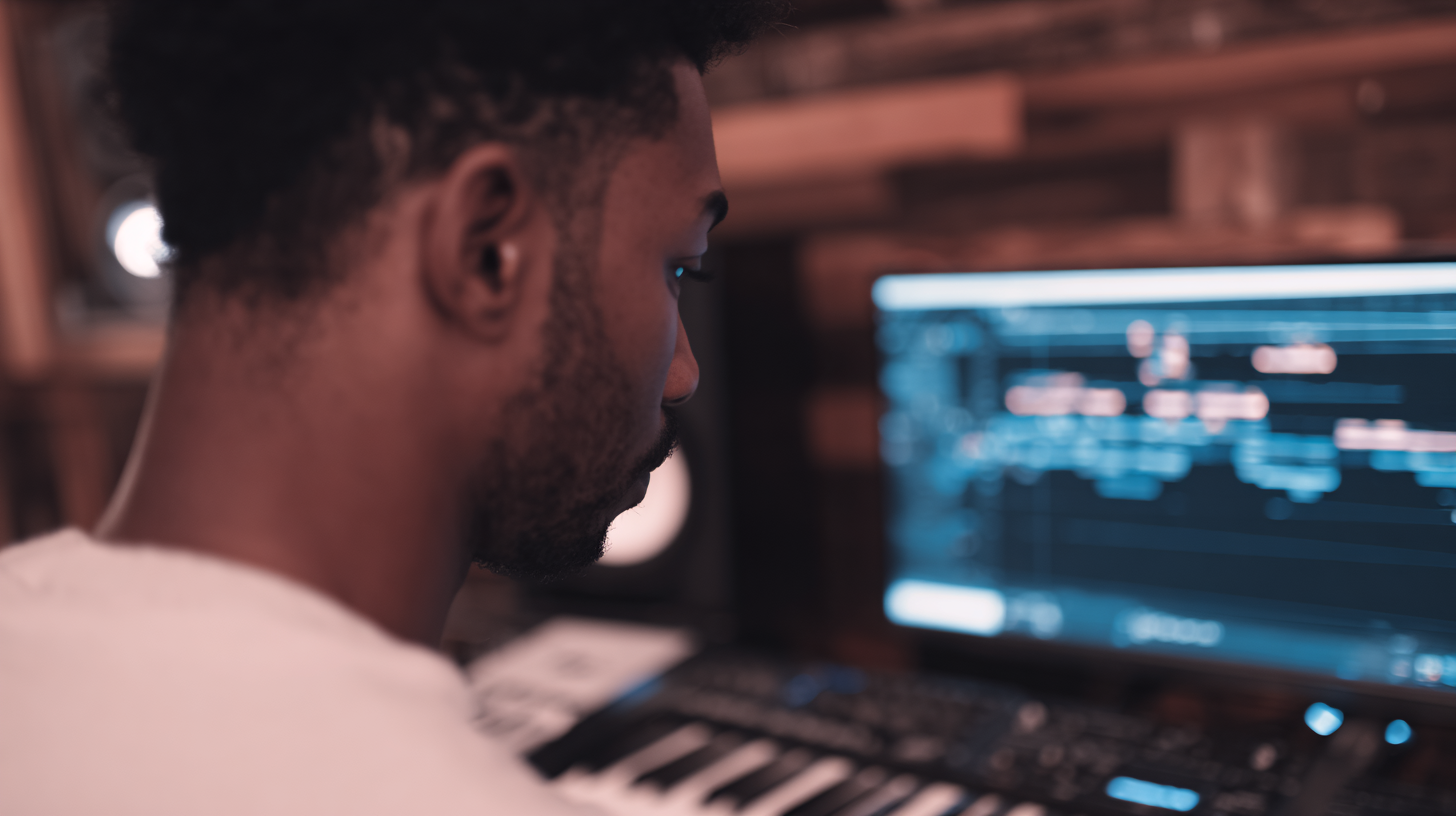
Inside Amaranthe’s ‘365’: Deconstructing Their Massive Wall of Sound
Nail The Mix Staff
Amaranthe’s sound is a masterclass in modern metal production: dense, polished, and unbelievably huge. Songs like “365” are packed with crushing riffs, intricate synth layers, and—most famously—a vocal onslaught that’s both impossibly catchy and technically immense. Ever wonder how a track with that much going on stays so clean and powerful?
We got our hands on the raw, unedited multi-tracks from the official session, produced and mixed by the legendary Jacob Hansen, to see exactly what’s under the hood. What we found was a lesson in smart arrangement, powerful performances, and some seriously epic layering. Let’s break down how the foundation of this track was built, from the drums to the guitars and right into that iconic vocal wall.
Building the Foundation: Drums That Slap (Raw)
Right off the bat, the drum session for “365” is extensive. Jacob Hansen captured everything, giving the mixer a ton of options to shape the final sound. But more mics doesn’t always mean a better sound; it’s the quality of the source that matters most, and these raw tracks sound fantastic.
Mics, Mics, and More Mics
The setup is a metal producer’s dream. We’re talking two bass drum mics (in and out), snare top and bottom, and four toms all miked with tops and bottoms. But the real texture comes from the ambient mics:
- Stereo Overheads
- Hi-Hat & Ride Spot Mics
- Multiple Cymbals (L/R Chinas, Splash, Stack)
- Ambient Close Room
- Ambient Far Room
- MS (Mid-Side) Room Mic
Pro Tip: When you open a session with this many tracks, don’t feel obligated to use everything. These are the tracking files, meaning they captured every possible option. The final mix might only use a fraction of these. The key is to listen and decide what serves the song, not just what’s available. For a deeper dive into making these kinds of choices, check out how pro mixers approach complex sessions on Nail The Mix.
Performance Over Processing
Even with a pristine recording setup, it’s the drummer’s performance that makes these tracks shine. The fills are tasteful and powerful, played with a sense of groove and space that allows them to sound massive without getting overly busy. The performance is packed with subtle ghost notes and tasty articulations on the snare.
This is where the real work of a mixer comes in. Even if you plan to reinforce the kick with a sample (as is common in this style), you must preserve those human details. Use careful parallel compression on the live snare and overheads to bring those ghost notes forward and maintain the drummer’s feel.
The Unsung Heroes: Bass and Rhythm Guitar
It’s easy to get distracted by the synths and vocals, but the core heaviness of “365” comes from a rock-solid rhythm section. Interestingly, both the bass and guitar parts are prime examples of “less is more” in terms of complexity, but “more is more” in terms of power.
A Bass DI with Serious Power
The session includes just a single bass DI track. The magic here isn’t in a complex signal chain from the get-go; it’s in the performance. The bass is played incredibly hard, providing a punchy and consistent low-end foundation. In a dense mix like this, the bass’s job is to lock in with the drums and hold down the root notes, creating a solid floor for the vocals and synths to sit on.
A busy bassline would just create mud. This kind of powerful, foundational playing is the secret weapon for a huge metal mix—it’s simple, but it’s far from easy.
Rhythm Guitars That Serve the Song
Like the bass, the dual rhythm guitars are all about tight, powerful riffing. They aren’t doing anything needlessly fancy; they are a unified machine driving the song forward. This kind of playing is deceptively difficult. Playing a simple riff with the precision and authority to make it sound huge is a real skill.
One of the coolest parts is how the rhythm section locks up for key moments. Listen to the fill heading into the final chorus—the bass and guitars perfectly follow the drum pattern, creating a massive, unified impact that makes the chorus hit that much harder. That’s not autopilot; that’s the kind of intentional, killer arrangement you see from top producers like Jens Bogren. Want to mix these guitars yourself? You can get your hands on them by joining the Amaranthe session on Nail The Mix.
The Main Event: Dissecting Amaranthe’s Vocal Wall of Sound
Okay, let’s get to it. The vocals in “365” are the main attraction, and the track count is staggering. With three phenomenal vocalists blending their unique styles, Jacob Hansen had a mountain of pristine takes to work with.
The Anatomy of a Massive Chorus
That chorus burrows into your brain and doesn’t leave, and the sheer number of layers is a big reason why. We’re talking over 30 tracks of vocals firing at once. Here’s a rough breakdown:
- Main Melody: The lead line (“3-6-5”) isn’t just one vocal. It’s sung by at least seven or eight different vocal tracks at the same time, including different singers and octaves. This creates a single melodic voice that sounds larger than any one person.
- Harmonies: On top of that, you have multiple harmony parts, and each of those harmonies is also doubled.
- Ad-libs and Textures: Sprinkled throughout are additional vocal textures and ad-libs that add to the depth.
This a cappella clip from the session gives you a taste of the complexity: when you stack that many perfectly-tuned and timed vocal performances, you get a “super-vocal” that sounds absolutely colossal.
The Ultimate Mixing Challenge: Vocal Balancing
This is where the real work begins for a mixer. The number one challenge with a session like this is finding the perfect vocal balance.
The vocals must be the center of attention—they carry the hook and the emotion of the song. But if you push them too loud, you’ll completely lose the power and groove of the rhythm section. You risk turning a heavy metal track into a pop song with loud guitars in the background. Finding that sweet spot requires meticulous level automation and surgical EQ to carve out space for every element to be heard without fighting.
You have to make the vocals feel huge and dominant while ensuring the drums, bass, and guitars still hit you in the chest.
Putting It All Together
Breaking down the “365” session reveals that Amaranthe’s massive sound isn’t just about turning everything up. It’s built on:
- A solid foundation of well-played, well-recorded drums.
- Powerful and precise rhythm guitars and bass that serve the song.
- Insanely detailed vocal layering that requires a deft hand to mix, blending the creative and technical skills that define the mixing and mastering process.
Amaranthe on Nail The Mix
Jacob Hansen mixes "365"
Get the Session
Analyzing these tracks is one thing, but imagine watching a pro like Jacob Hansen actually mix them. Seeing how he tames that vocal beast, glues the rhythm section together, and makes every synth sparkle is an education in itself.
If you’re ready to move past presets and learn how the biggest records are made, you can get the full multi-tracks for “365” and watch Jacob Hansen’s complete mixing masterclass.
➡️ Get the Amaranthe “365” multi-tracks and full course on Nail The Mix.
Get a new set of multi-tracks every month from a world-class artist, a livestream with the producer who mixed it, 100+ tutorials, our exclusive plugins and more
Get Started for $1




